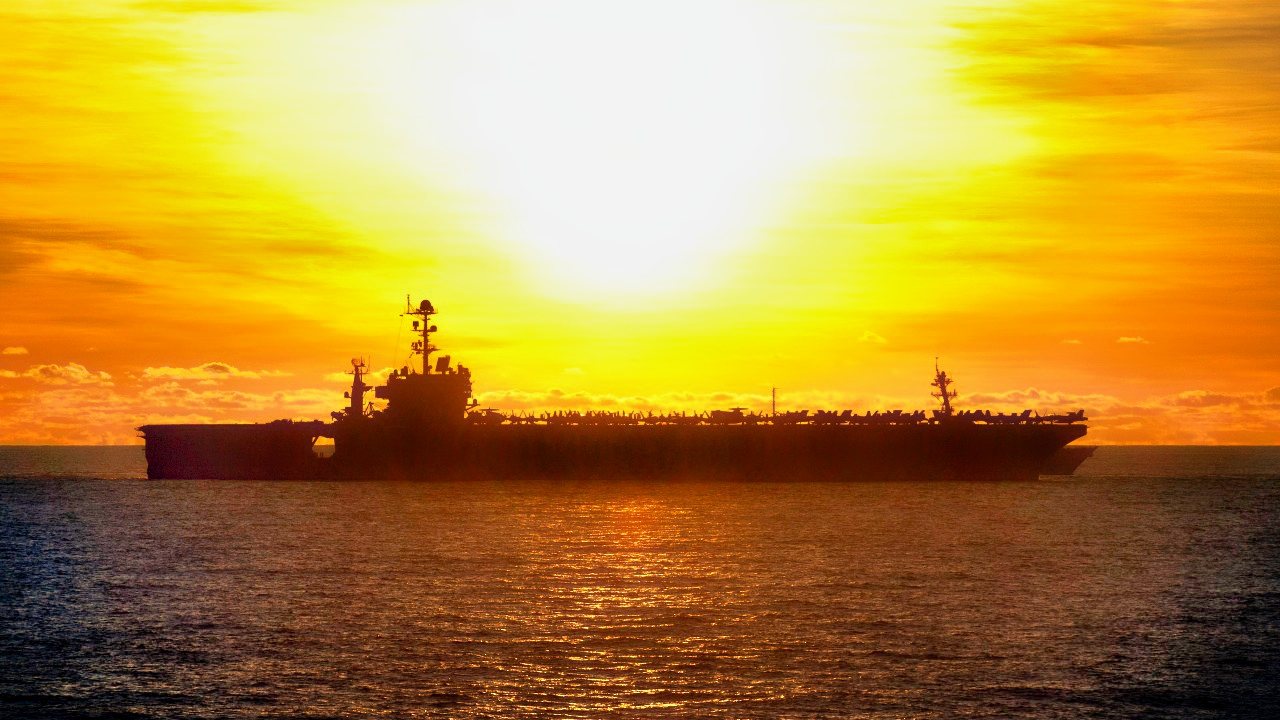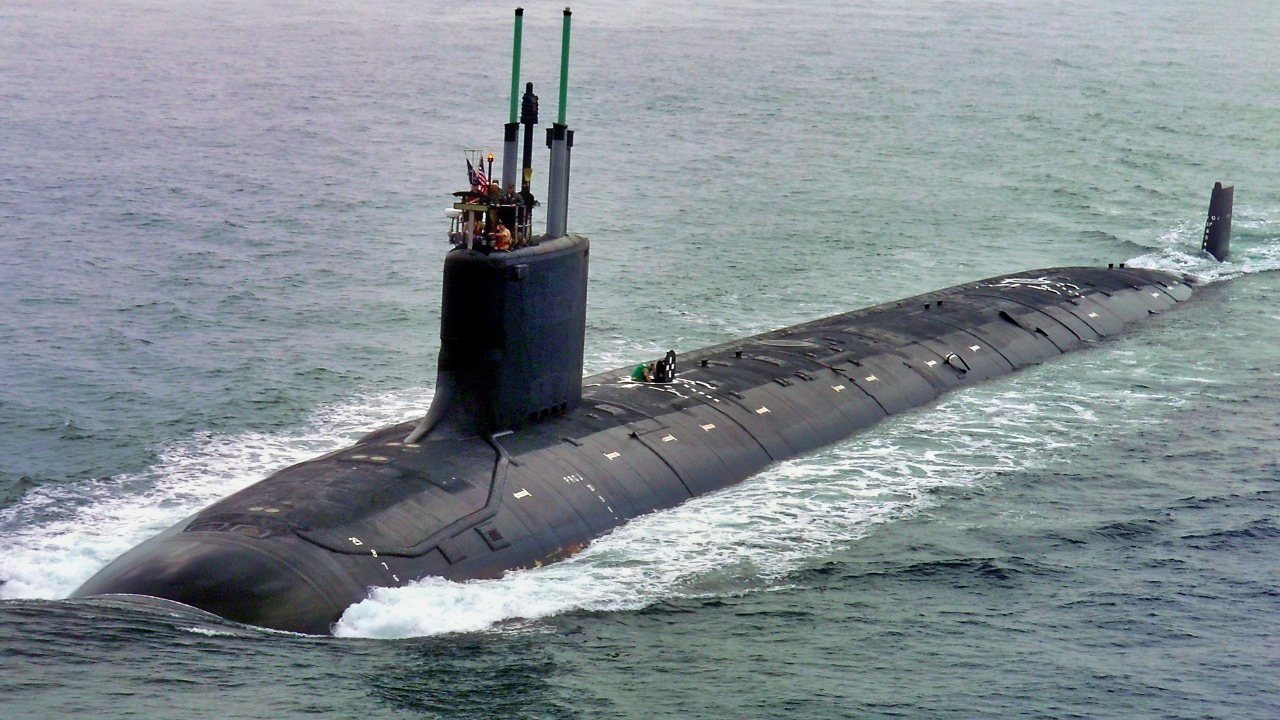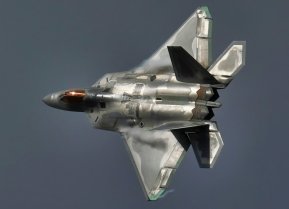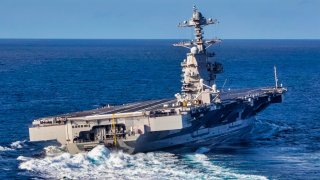Ranked: The Top 5 U.S. Navy Warships Right Now
America’s projection of power would be impossible without the prowess and versatility of its naval forces. While every service component is important, five of the Navy’s warship classes stand out.
Top 5 U.S. Navy warships today: The Ford-class, Nimitz-class, Zumwalt-class, Virginia-class Block V and Ohio-class submarines - The U.S. Navy is the world’s most powerful sea-based service, and it has been since World War II.
From nuclear submarines and aircraft carriers to fighter jets and destroyers, the Navy has a means to any end, and a platform for every mission.
Top 5 U.S. Navy Warships Right Now
America’s projection of power would be impossible without the prowess and versatility of its naval forces. While every service component is important, five of the Navy’s warship classes stand out.
The Ford-Class
The Navy’s newest aircraft carrier is the most advanced in the world. Ford-class warships show the service’s ability to adapt as new technologies emerge. From the flight deck and software-controlled electromagnetic catapults to its nuclear plant, every attribute of the Ford class is top of the line.

The class is designed to maximize the sortie generation rate of attached strike aircraft, resulting in a 33% increase in sorties – about 160 – over the preceding Nimitz class. The lead ship of the class, the USS Gerald R. Ford, successfully completed its first deployment in the Mediterranean earlier this year.
The Nimitz-Class
Before the Ford’s introduction, Nimitz-class carriers were the largest warships to ever set sail. Measuring roughly 1,093 feet in length and displacing over 100,000 long tons, these nuclear-powered giants have been a critical component of America’s naval power for almost five decades.
Two Westinghouse A4W nuclear reactors power the Nimitz past 30 knots. Nimitz ships carry roughly 90% more aviation fuel and 50% more ordnance than their Forrestal-class predecessors. Each of the Navy’s 10 Nimitz warships can carry 60 airframes.

These ships have been around for a while, and they continue to play an important role in the fleet.
The Zumwalt-Class
The Navy’s USS Zumwalt (DDG 1000) is the lead ship of the largest and most technologically advanced class of surface combatants in the world. Three Zumwalt destroyers have been designed as multi-mission stealth ships.
Measuring about 610 feet in length and displacing 16,000 metric tons, Zumwalt ships are equipped with two 155mm naval guns. The USS Zumwalt was the first U.S. Navy surface combatant to employ an Integrated Power System.

As detailed by Military.com, “Key design features that make the DDG 1000 IPS architecture unique include the ability to provide power to propulsion, ship’s service, and combat system loads from the same gas turbine prime movers.”
The Virginia-Class Block V
The upcoming Block V Virginia-class submarine is expected to hit the waters by the end of this decade.
Virginia-class ships have been a Navy mainstay for more than 20 years, operating in littoral and open-ocean missions and carrying out intelligence gathering, reconnaissance, surveillance, and anti-warfare missions.

As the Navy’s newest class of nuclear-powered cruise-missile fast attack submarines, these ships are instrumental. Block V variants will add lethal upgrades including the Virginia Payload Module. They will be designed with extended mid-body sections to store extra Tomahawk cruise missiles and other munitions.
The Ohio-Class Submarine
Until the Navy begins to retire its Ohio-class SSGNs (guided missile submarines) later this decade, these subs will continue to play a crucial role in America’s nuclear deterrence. Ohio-class ships can carry 154 Tomahawk missiles and are capable of supporting special operations forces.

Following the collapse of the USSR, Ohio-class ships were converted from ballistic missile submarines to SSGNs to adhere to the guidelines outlined in the 1994 Nuclear Posture Review. In addition to their missile-lugging abilities, the Ohio ships have more flexibility than their ballistic-missile counterparts. Their vertical launch system tubes, designed for Tomahawks, can also carry supplies, extending the on-station time of the sub as well as providing support for up to 66 special forces personnel.
About the Author: Maya Carlin
Maya Carlin, National Security Writer with The National Interest, is an analyst with the Center for Security Policy and a former Anna Sobol Levy Fellow at IDC Herzliya in Israel. She has by-lines in many publications, including The National Interest, Jerusalem Post, and Times of Israel. You can follow her on Twitter: @MayaCarlin.
All images are Creative Commons.


